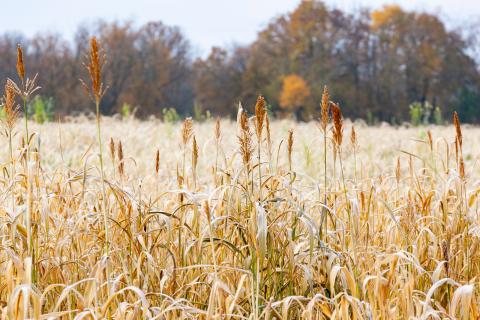Pasture and Forage Minute: Grazing Grain Sorghum Stover and Corn Residue
October 26, 2023
A review of the pros and cons of grazing sorghum and corn residue, and how to maximize the nutritional benefits of each.

USDA Announces 2023 Marketing Assistance Loan Rates for Wheat, Feed Grains, Oilseeds, Rice and Pulse Crops
April 13, 2023
National loan rates for 2023 crop year wheat, feed grains and oilseeds remained unchanged from 2022 crop year levels.
Pasture and Forage Minute: Forage Drought Recovery, Prussic Acid in Sorghum
October 5, 2022
Extension educators share insights on the drought recovery process for pastures, how to graze forage sorghum species after freezing temperatures and how to capture the best nutrition from grazing crop residue this fall.
USDA Expands Insurance Coverage for Double Cropping for 2023
July 22, 2022
USDA’s Risk Management Agency is expanding double crop insurance opportunities in over 1,500 counties where double cropping is viable.
Pasture and Forage Minute: Fall Grazing and Pasture Management
October 5, 2021
Extension Educator Todd Whitney explains why it's best to graze grain sorghum stover before corn residue, plus a rundown on improving hay and crop residue through ammoniation and proper care of fall pastures for best plant health through the winter.
2021 UNL High Plains Ag Lab Summer Crop Field Day Set for Aug. 10
August 5, 2021
During field tours at the High Plains Ag Lab, UNL researchers will discuss the latest results of their studies on dryland crops — in particular, sunflowers, proso millet and grain sorghum.
Grain Sorghum Research in Western Nebraska
December 5, 2019
Grain sorghum variety testing was conducted at the Henry J. Stumpf International Wheat Center near Grant this year. The trial of 24 grain sorghum varieties also evaluated the effects of row spacing, comparing 15- and 30-inch rows.
Corn and Soybean Condition Steady; Dry Bean Drops
August 29, 2019
For the week ending August 18, USDA’s National Agricultural Statistics Service reported the following crop condition and progress:





